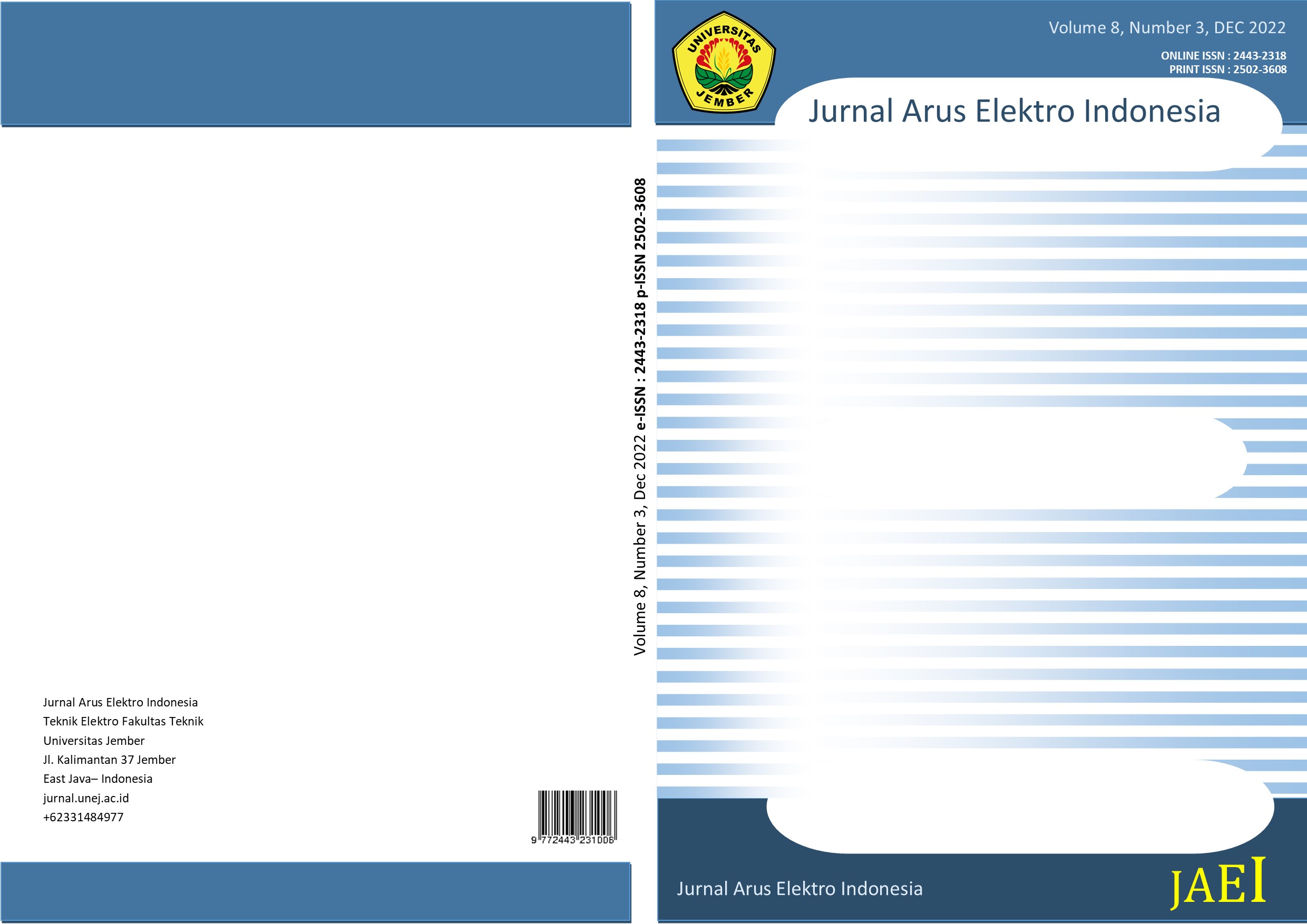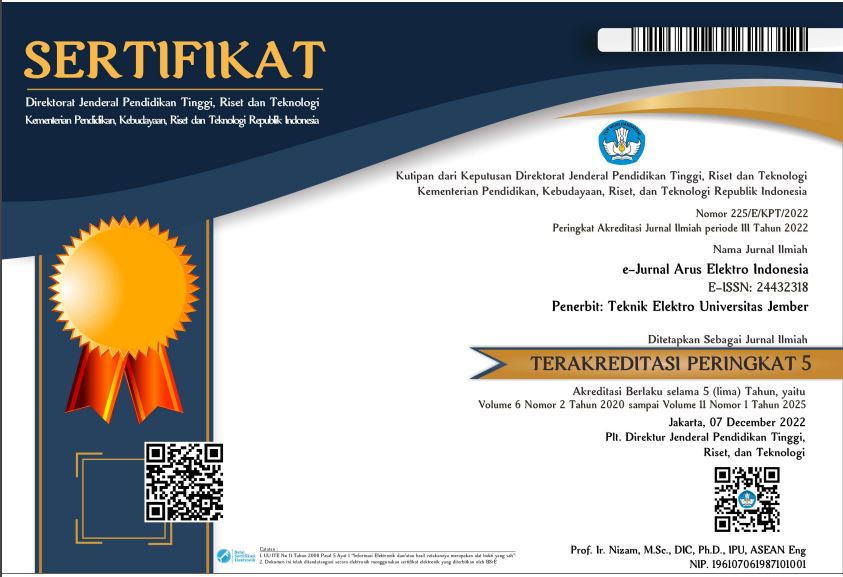1575.42 MHz Frequency Utilization on Intelligent Transportation System in Car Monitoring Distribution Delivery Logistic Using ublox GPS Neo 6M
Abstract
Intelligent Transportation System or a smart transportation system with new technology that has been growing in recent years which is used as a computing system and communication technology for various purposes, such as traffic management, vehicle and highway security and emergency services. The current growth of e-commerce is very powerful, because people have placed e-commerce as a lifestyle. The high demand for logistics and delivery causes the need for monitoring package cars. This research system is designed to automatically monitor package cars, by utilizing the receiver frequency in the L1 frequency band (1575.42 MHz) which is modulated by the Ublox GPS Neo 6M module. Accelerometer sensors and acoustic data are used in cars as speed gauges and are used to detect and provide brief recordings in the event of an accident and can also monitor the speed of the car's distribution of packages in real-time. It was obtained for 7 trials with the same speed and constantly to avoid the Doppler effect that the accuracy of the GPS was quite good and the data was successfully uploaded to the web server in real time.
References
[2] F. Tang, Y. Kawamoto, N. Kato, and J. Liu, ‘‘Future intelligent and secure vehicular network toward 6G: Machine-learning approaches,’’ Proc. IEEE, vol. 108, no. 2, pp. 292–307, Feb. 2020.
[3] J. A. Moral-Muñoz, M. J. Cobo, F. Chiclana, A. Collop, and E. Herrera-Viedma, “Analyzing highly cited papers in intelligent transportation systems,” IEEE Trans. Intell. Transp. Syst., vol. 17, no. 4, pp. 993–1001, Apr. 2016.
[4] Budi Aulian, (2019). Penerapan Alat Berbasis Gps Dan Iot Untuk Tracking Posisi Kendaraan Pribadi. Telkom University.
[5] M. A. Javed, E. B. Hamida, A. Al-Fuqaha, and B. Bhargava, ‘‘Adaptive security for intelligent transport system applications,’’ IEEE Intell. Transp. Syst. Mag., vol. 10, no. 2, pp. 110–120, 2018.
[6] C. A. Pamungkas, “Applikasi Penghitung Jarak Koordinat Berdasarkan Latitude dan Longitude Dengan Metode Euclidean Distance dan Metode Haversine,” 2019 Jurnal INFORMA Politeknik Indonusa Surakarta 2019 vol.5, no 2 pp. 1-6.
[7] Alfeno, S., Eka, R., & Devi, C. (2017). Implementasi Global Positioning System ( GPS ) dan Location Based Service ( LSB ) pada Sistem Informasi Kereta Api untuk Wilayah Jabodetabek. Sisfotek Global, 7(2), 29.
[8] Raut, P.P., Mahato, A., Nagane, A., Kuwar, A.M. and Chip, R. (2017) Public Transportation System Using IoT. International Journal for Scientific Research and Development, 5, 240-242. https://www.ijsrd.com
[9] Jalaney, J., et al. (2019) Review on IoT Based Architecture for Smart Public Transport System. International Journal of Applied Engineering Research, 14, 466-471. http://www.ripublication.com
[10] S. M. Khan, M. Rahman, A. Apon, and M. Chowdhury, ‘‘Characteristics of intelligent transportation systems and its relationship with data analytics,’’ in Data Analytics for Intelligent Transportation Systems. Amsterdam, The Netherlands: Elsevier, 2017, pp. 1–29.

This work is licensed under a Creative Commons Attribution-ShareAlike 4.0 International License.
Sebagai penulis yang sesuai naskah dan atau atas nama semua penulis, saya menjamin bahwa :
- Naskah yang diajukan adalah karya asli saya/kami sendiri.
- Naskah belum dipublikasikan dan tidak sedang diajukan atau dipertimbangkan untuk diterbitkan di tempat lain.
- Teks, ilustrasi, dan bahan lain yang termasuk dalam naskah tidak melanggar hak cipta yang ada atau hak-hak lainnya dari siapa pun.
- Sebagai penulis yang sesuai, saya juga menjamin bahwa "JAEI Editor Journal" tidak akan bertanggung jawab terhadap semua klaim hak cipta dari pihak ketiga atau tuntutan hukum yang dapat diajukan di masa depan, dan bahwa saya akan menjadi satu-satunya orang yang akan bertanggung jawab dalam kasus tersebut.
- Saya juga menjamin bahwa artikel tersebut tidak mengandung pernyataan memfitnah atau melanggar hukum.
- Saya/kami tidak menggunakan metode yang melanggar hukum atau materi selama penelitian.
- Saya/kami memperoleh semua izin hukum yang berkaitan dengan penelitian,
- Saya/kami berpegang pada prinsip-prinsip etika selama penelitian.
- Saya/kami bersedia apabila artikel kami dipublikasikan oleh tim redaksi JAEI







